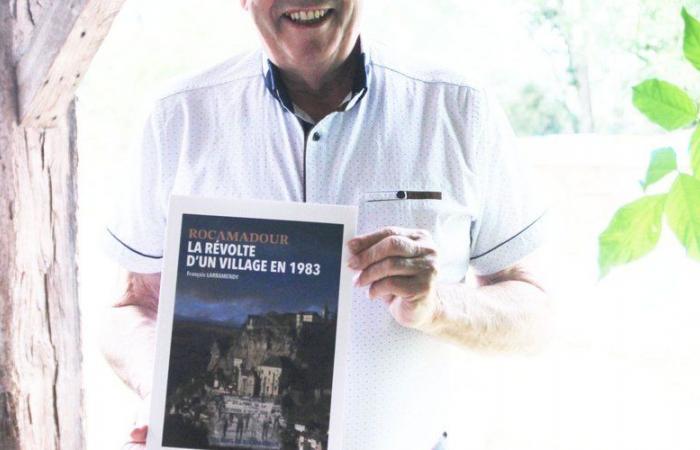the essential
François Larramendy will present the book “Rocamadour, the revolt of a village in 1983” on Sunday September 1st at the La Truffière aux livres fair… in Rocamadour.
In the 20th century, the inhabitants of Rocamadour, in the Lot, and the central administration opposed each other over a bypass project. In 1983, elected officials and the population boycotted four rounds of municipal elections before a team was elected in August and the “small ring road” project was finally accepted. François Larramendy recounted this fight during a conference and then in the book “Rocamadour, the revolt of a village in 1983”. He will be at the Rocamadour book fair on Sunday.
Why did you become interested in these events?
I experienced these events myself, the extreme tensions that existed at the time and at the same time the solidarity. And recently, I was surprised to see elected officials being mistreated. I wanted to show the work of these grassroots elected officials. And Rocamadour is a special village. We experience extremes there. This shows that there are tensions, and that we can get out of them.
What did you rely on?
On Covid: the municipal archives were far from everything. I was alone there. And I wanted to pay tribute to André Jallet, the mayor who led this intense fight.
Of course, I interviewed Amadourians who lived through these events, who told me intimate anecdotes. I had Martin Malvy and the prefect at the time, who is 94 years old. He was an essential element of the success and he is someone who is remembered, either fully supporting or fully opposing.
Had the fight been going on for a long time?
Thirty years, thirty years of struggle. It was the Trente Glorieuses and a time when Paris was deciding. Everything was developing: transport, tourism. All these cars were passing through the city. A caravan was passing a car which was passing a hay trailer. But the National Higher Commission for Sites was dug in its heels; it didn’t want a ring road. For it, it would destroy the purity of the site. It was supported by the architect of the Bâtiments de France.
It’s a thirty-year fight to open up the city. And we went all the way with a ballot box strike. We did five rounds. When it came to fruition, it was a huge celebration.
Do you remember?
Oh yes! The mayor had asked me to organize it. There were 400 of us in a garage around a giant sauerkraut. It was an extraordinary atmosphere. It was the Liberation of Rocamadour. It was paroxysmal.
It’s hard to imagine cars in the village.
Now, people can’t imagine. While there were memorable traffic jams, from the Figuier gate to the tunnel: 700 meters of traffic jams. Can you imagine trailers of hay? The farmers had to hay in the valley and go back up. Some told me it was their nightmare.
And 1983 was a turning point for this village. We can never thank this municipal council enough. When we say: it was better before, it was not better there.
Why did you decide to write a book?
I am part of an association, Les Amis de Rocamadour. Given the high attendance of Amadourians at the conference, she asked me to ensure that a written document remains. She is the one who is publishing the book. This event was too important for Rocamadour.


